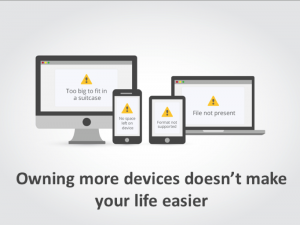Regardless of which platform you use, it’s important to target with purpose, define audiences strategically and develop impactful content.
Social platforms and third-party apps seemingly rise and fall overnight, making it difficult for brands to adapt to the evolving landscape and develop targeted, platform-specific content. Consequently, brands often struggle to allocate their resources strategically and purposefully. Strategies that may have been successful in 2018 are already obsolete for 2019. The same will be said for 2020 and beyond.
So exactly where are social ad initiatives falling short? And what can brands do to address these shortcomings? Here are a few common pitfalls we see across channels.
Targeting in all the wrong ways
Brands often overlap their prospecting and retargeting efforts, delivering irrelevant messages for new and existing customers alike. This wastes dollars and delivers messages to the wrong consumers at the wrong time. Conversely, some campaigns don’t have a targeted audience at all. Without a clear sense of their audience or objectives, brands tend to struggle with purposeful targeting. In one audit of a new partner, we observed a previous campaign where ads were served to over 240 million people without any identified target audience.
We’ve seen brands also target such a small audience they cannot reach their campaign target goals. Striking a balance between strategic targeting and audience size is a critical skill that brands need to master in order to optimize the reach and ROI of any social campaign.
Creating and delivering content
Creating the right, engaging content can be a hurdle. For example, an outdoor cooking equipment manufacturer posted social ads that showcase food instead of actual products. While food is an engaging image – especially for people scrolling Pinterest – it’s ineffective in establishing a brand identity or product portfolio with potential prospects.
Social video content is often a compelling and effective sales and engagement driver. Despite that, we often find video content is often low quality or even non-existent. In 2019 we saw an explosion in video performance, even with the decline in Facebook’s accessible inventory. There are ways to reduce production costs and still develop high-quality content. Consider free creative services platforms that produce fantastic results or minimize the length of higher-budget videos to reduce production costs.
With the total number of global social platform users to rise to over 3.09 billion by 2021, and with an average of 136 minutes spent on social each day in 2018, advertising success is dependent upon strategic social investment.
Brands will continue to miss significant opportunities unless they look ahead to the emerging trends and technologies that will drive social success in the future. Regardless of which platform becomes the next big thing, remember to always target with purpose, define audiences strategically and develop impactful content.
Pro Tip is a special feature for marketers in our community to share a specific tactic others can use to elevate their performance. You can submit your own here.
Opinions expressed in this article are those of the guest author and not necessarily Marketing Land. Staff authors are listed here.
(36)
Report Post





